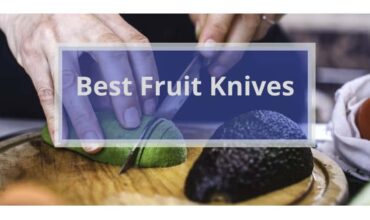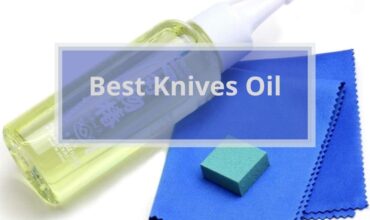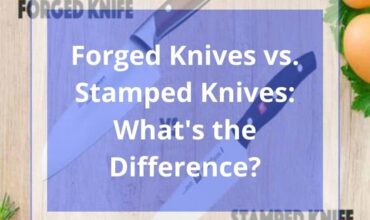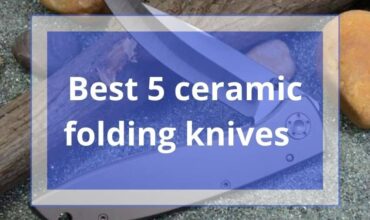You may think that an oyster or a clam shucking knife is the same, but guess what? They are pretty different. You cannot open a clamshell using an oyster knife and vice-versa as both require different opening techniques. Why? Though both clams and oysters are bivalves, which belong to the class Mollusca, order Bivalvia, the formation of body and shell are entirely different. And that is where the difference in opening techniques and the used shucking knives come from.
Read on to learn more about clams’ and oysters’ different features and why they require different opening techniques and different shucking knives.
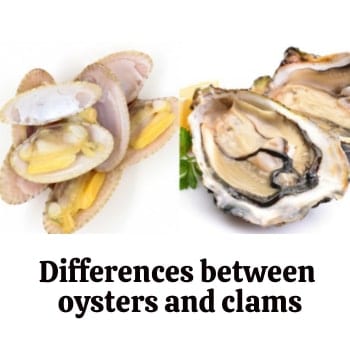
Differences between oysters and clams
| Clam | Oyster | |
| Category | Family Veneridae | Family Ostreidae |
| Species | Hard & soft shells | True & pearl |
| Homeland | Salt and fresh waterAtlantic and Pacific oceansBuried in the ocean floor | Saltwater more than freshwater East and West coastsThey stick themselves to a safe spot (rocks & other oysters) |
| Body and shell features | Smooth, soft, and polished shellsDull white to slightly brown meat | Rough, bumpy surfaces with wavy linesLight white to somewhat brown meat |
| Body and shell features | Smooth, soft, and polished shellsDull white to slightly brown meat | Rough, bumpy shells with wavy linesPale white to tan meat |
| Produces pearls? | No | Yes; genus Pinctada, family Pteriidae |
| Taste/texture | Spicy, salty, & chewy | Buttery, smooth, tender, can be slurped down |
| Nutrients | Vitamin C, manganese, selenium & iron | Zinc, potassium, & phosphorus |
| Cooking | Often cooked in chowders, stews, soups, stir-fries, steamed dishes | Raw, baked, fried, or grilled; often eaten solo |
We now know about the difference between clam shells and oyster shells, so let’s learn more about the differences between their shucking knives and techniques. Oyster and clam shucking knives have different features, and each serves its purpose. Don’t try to use an oyster knife to open a clam or vice versa; this will be difficult, dangerous, and could damage your food, break your knife, or injure your hand.
Read More: https://kitchenzad.com/10-best-oyster-knife-review/
Clam Knives Features and Shucking Technique
- Ship Weight: .08 lbs.
- Blade Length: 3″
- Blade Tip: Rounded
- Edge Type: Straight Edge
- Handle Material: Beechwood
The blade
- A thin or slim blade can quickly and easily go through a clam shell than a thick blade.
- A Long and flat blade that ends with a rounded tip would be perfect for opening clams.
- The blade should generally be firm solid with a slightly sharp edge; to cut through the clam muscles.
The handle
- Always choose a handle with a stable, smooth, and comfortable grip so the shucking process will be easier on you.
- Knives with Long or large handles are suitable for giant clams, while smaller ones with short handles are perfect for small clams.
- A large clam shucking knife is preferred if you don’t know which size of clam you are going to shuck.
- In general, a lightweight and slim knife handle will be perfect for this task, as the shucking process could take a long time.
Read more , The Best Oyster Grilling Pans And What To Consider
Clam shucking Technique
- Cold shellfish open up better than warm ones; thus, it is always better to refrigerate them until you’re ready to use them or lay them on the top of iced cubes or crushed ice. Don’t forget to scrub the shell clean under cold, running tap water, and don’t keep anything that isn’t tightly closed.
- Clams are easier for you to open than oysters are. Maybe it’s the shell’s formation that lets you easily slip a knife through them without having to twist it or pry it out. To open a clamshell, you need to use your force to slide the knife blade between the two shells, and it will be easily opened.
- The clam’s shell starts with a curve, then a fine straight line, and ends with a turn. Always try to find the point where the two covers seem more open than anywhere else on the shell edge.
- Hold the clam with the palm of your left hand, then lift the clam up so you will be able to see your target area. Hold your shucking knife with your right hand and start to slide it through your target point. Use your left-hand fingers to add pressure on the utensil and push the blade into the clam.
- While opening clams concentrate on cutting the two muscles of the top shell without cutting through its tender meat. After sliding your knife through the shell, you will hear and feel the first muscle detached. Pull the knife back out, so only the tip of the knife remains inside the clamshell, then angle the blade up till it touches the inside of the top shell and moves it towards the second muscle to cut it.
- Once you’ve freed the top shell from the bottom one, carefully remove any meat that might be attached to it. Then, use the knife’s tip and slide it under the meat inside the bottom half of the shell to free the meat from its shell. Please try not to lose any delicious liquid (liquor) while opening your clams.
- It would be delicious when catering it with a squeeze of lemon and a cocktail sauce. Enjoy!
Raed More: https://kitchenzad.com/how-to-choose-oyster-knife/
Oyster Knives Features and opening oysters Technique
- New Haven pattern with a Sani-Safe handle
- High Carbon, High Alloy, Stain free DEXSTEEL
- This knife is NSF certified
- Care: Hand wash and dry after use
- Made in USA
Unlike clam knives, oyster shucker come in different sizes, blade types, and handle materials. And they are manufactured to fit oysters’ various features of each area and are named according to where the oysters were found.
Oysters’ shucking Knife main types
- Boston Type
- Galveston
- New Haven
- Providence
Read more, How To Shuck Oysters At Home
The blade
- There are many different types of knives, depending on the kind of oysters and how the user shuck them.
- A wide and short blade is perfect for beach large oysters with a strong or hard shell and will not break easily when you apply force to open it.
- A short, narrow, and sharp blade is perfect for tricky, small, and precise oysters as Kumamotos. If you used different blade types with this kind of oyster, the shell could be easily broken when you use your force to open it and damage the tender meat inside.
- The blade of oysters’ shucking knife is not usually sharp, and it ends with a slightly sharp pointed tip.
The handle
- Oyster shucking handles are available in different shapes and sizes due to the knife’s type, but a rounded or long pear-shaped handle will be perfect for this task.
- It would be best to have a lightweight, firm handle with a comfortable grip to make the shucking task more manageable, as the shucking process could take a long time due to the number of oysters you need to shuck.
Oyster shucking Technique
- Fresh oysters must be tightly closed or directly close when you touch them. Always keep them cold till you start shucking them. Use a bowl filled with crushed ice and put your oysters on it. Before shucking your oysters scrub the shell clean under cold, running tap water, and don’t keep anything that isn’t tightly closed.
- Arm yourself with a folded kitchen towel or a cut resistant glove to protect your hand from injuries and prevent slipping your oysters. Place an oyster on the board with the flat side facing the top and hold it tightly with your left hand.
- Start to insert the sharp tip ( An up curved tip is preferred) of the blade smoothly into the hinge of the shell. You will need a few attempts till you find the sweet spot of that hinge where you can slip the knife smoothly.
- You don’t want to damage the oysters by pushing the knife hard and fast into the shell. Just start to use a little pressure with a knife twist and up and down movements to separate the two shells and cut the adductor muscle that connects the shell’s two sides.
- Don’t Forget; always keep your blade stuck to the edge of the upper shell to not spoil the oysters by cutting them with your knife.
- After you open the shell, you may find some dirt or mud at the hinge place. To not expand the dirt over the oysters, use a clean towel to clean your knife as you need to keep your oysters clean and out of germs.
- Now, you can throw away the top half of the oyster shell; we don’t need it anymore. Let’s look at the second half, where your shucked oyster is located. A good oyster looks clear and smells fresh like the sea; get rid of anyone that misses one of those features.
- Finally, after cutting through the muscle, insert the tip of your knife into the oyster meat and cut away any connective tissue to separate it from the bottom shell.
- While doing this, try to conserve the amount of liquid around the oysters (Oyster Liquor). If you found unwanted parts on your oyster, remove them with your knife and keep your fresh oyster ready to serve.
- A squeeze of lemon and a cocktail sauce for catering raw oysters on the half shell will be perfect. Enjoy!
Read More: https://kitchenzad.com/santoku-vs-chef-knife/
General Advice
- A good knife is made from a strong, sharp stainless steel blade. Clams and oysters are high in natural salt content, which is very corrosive. Stainless steel is the ideal material for clam and oyster shucking knives, as it is the most resistant to corrosion.
- The handle should be large enough to allow you to grip it firmly while wearing gloves and using substantial force. A better option than a wooden handle is to choose a knife with a plastic handle (polyethylene or polypropylene).
- If you’re going to be shucking clams and oysters for a long time, the knife should feel comfortable in your hand so that you don’t get tired.
Also, read our buying guide for the oyster shucking machines.
FAQ about oysters and clams
Which is better clams or oysters?
Zinc, an essential mineral, is found in oysters. It helps with wound healing and immunity. Clam meat might be healthier than oyster meats. Clams are usually found in fresh water and are low in fat and calories, so they’re a good choice for a healthy snack.
Can you eat raw clams like oysters?
Clams can be eaten either raw or cooked. The best natural are tiny littleneck clams or mid-sized cherrystones. Some, like quahogs, are too chewy for eating raw but are perfect in chowders and soups.
Also check, What are the Benefits of Oysters?
Can you open oysters without an oyster shucking knife?
Yes, you can, and here is a substitutional solutions list of how to shuck oysters without an oyster knife:
- A flat-head Screwdriver Method.
- Heat or Oven Method.
- A microwave Oven Method.
- Steam Method.
- Broiler or Grill Method.
- A paring knife Method.
- A Butter Knife.
Do oysters and clams taste the same?
They both taste salty, but they each have their unique flavor. Clams have a robust salty taste, while oysters are creamy and smooth. Clams are harder to swallow than oysters, as you need to chew them a little.


